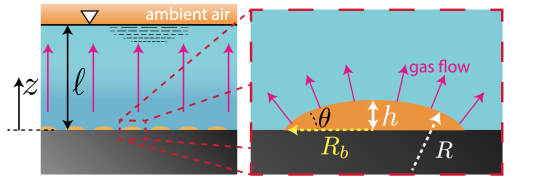Surface nanobubbles and surface nanodroplets: Lattice Boltzmann numerics for dynamics and collective effects






This project is completed by Dr. Matteo Lulli at the University of Twente.
In heterogeneous catalysis, gas bubbles often form at the catalyst, blocking its efficiency. In their smallest known form the bubbles come as so-called surface nanobubbles. These are only a few femtoliters in volume and can stay at the interface as long as several hours or even days. The formation of surface nanobubbles can not only occur through (catalytic) chemical reactions, but also through electrolysis or when the interface experiences gas super-saturation by the change of the solvent, or of the temperature, or by pressure reduction.
Very similar to surface nanobubbles are surface nanodroplets that are liquid nanoscale domains on the solid surface in contact with an immiscible bulk liquid. Also these are relevant in catalytic reactions that produce an oil phase in an aqueous environment or vice verse.
In this project we want to better understand the properties and dynamics of surface nanobubbles and surface nanodroplets with the help of Lattice Boltzmann simulations in order to capture both the dynamics of single surface nanobubbles and nanodroplets and their collective dynamics (Ostwald ripening).
This project is the Lattice Boltzmann numerical counterpart to the experimental project “Surface nanobubbles and surface nanodroplets” and to the MD/theoretical project “Surface nanobubbles and surface nanobubbles: Theory and numerics for dynamics and collective effects.”
Project leader: Prof. Detlef Lohse


























